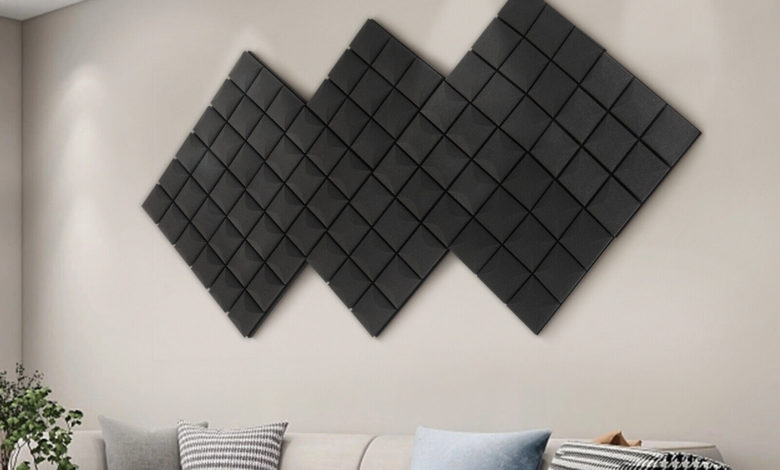Materials for Soundproofing 101: A Homeowner’s Handbook to Quieter Living

When it comes to the atmosphere of your home, tranquillity is a treasure. The constant hum of appliances, distant traffic noise, or even chatty neighbours can seem to invade the very walls of your sanctuary. If you’ve ever felt like you were living in a fishbowl, then soundproofing may be the solution for creating that perfect oasis of peace and quiet.
What is Soundproofing?
Soundproofing is the process of reducing or eliminating sound transmission between two spaces. This can be achieved by adding sound-absorbing materials to walls, floors, and ceilings and sealing any gaps or openings that allow sound to travel.
Benefits of Soundproofing
There are numerous benefits to soundproofing your home. Some of the most notable ones include:
- Improved quality of life: Soundproofing can significantly reduce noise pollution, creating a quieter and more peaceful environment for you to relax and sleep.
- Enhanced privacy: With soundproofing, you can enjoy your personal space without worrying about neighbours or passersby overhearing conversations or activities.
- Increased property value: Homes with good soundproofing are highly desirable to buyers and can fetch a higher price in the market.
- Better energy efficiency: Soundproofing materials also have insulating properties, helping to regulate temperature and save on energy bills.
1. Acoustic Foam Panels
When creating a personal oasis of silence, acoustic foam panels are among the most versatile materials for soundproofing at your disposal. They are ideal for spaces with high mid and high-frequency noises, like those from a home theatre system or conversation that you’d rather not have heard in the next room.
How They Work
Acoustic foam reduces noise by controlling reverberations, which are reflections of sounds within a confined space. These panels are designed to absorb sound energy, converting it into heat. The key is their open-cell, porous structure that dissipates sound waves as they pass through the foam.
Installation Tips
- Identify the noise source and the reflective surfaces it bounces off.
- Choose the right thickness and density to match your room size and purpose.
- Mount the panels high on the walls, especially the areas directly across from the noise source.
- Spread the panels evenly to prevent “hot spots,” which can amplify sound in some areas.
2. Mass Loaded Vinyl (MLV)
An essential heavyweight champion of soundproofing, MLV can upgrade your walls, floors, and ceilings to smother unwanted sounds, like heavy traffic or a loud HVAC system.
Description and Uses
MLV is a dense, flexible material that adds mass to structures, which dampens vibrations and reduces sound transmission through walls and floors.
How to Install MLV
- Cut the MLV to the required size using a utility knife.
- Affix it to the surface, ensuring that all seams are covered and that there is minimal transmission of sound through gaps.
- Use MLV tape for extra-seal in overlapping areas.
3. Soundproof Curtains
As much for their aesthetic appeal as for their sound-dampening properties, soundproof curtains are a homeowner’s best friend. They’re perfect for spaces where you want to maintain noise privacy without sacrificing style.
Features and Benefits
These curtains are typically double-layered with dense, sound-absorbing materials like cotton or polyester batting. They’re also weighted at the bottom to ensure a snug fit against the floor, further minimising sound leaks.
How to Choose and Hang Soundproof Curtains
- Look for curtains with a high Sound Transmission Class (STC) rating, the higher the STC, the better the soundproofing.
- Ensure that the curtains’ width and lengths are enough to create a seal all around the window or door opening.
- Use a sturdy curtain rod and ensure it’s securely anchored to carry the additional weight of the soundproof curtains.
4. Green Glue
This product is a must-have in any serious soundproofing project. Green Glue is a viscoelastic compound that converts sound energy into minuscule amounts of heat. It’s perfect for retrofitting existing structures with soundproofing capabilities.
What It Is and How It Works
Green Glue is a damping compound that works by sandwiching a layer of it between two rigid materials, typically drywall, plywood, or metal. When sound vibrations travel through the wall, Green Glue turns them into small amounts of heat, significantly reducing the sound that passes through.
Application Techniques
- Apply Green Glue in a consistent pattern across one of the rigid layers.
- Use an applicator gun for precision and even spreading.
- When sandwiching the layers, ensure the Green Glue is still wet as you clamp the surfaces together to maximise adhesion.
5. Door Sweeps and Weatherstripping
One often-overlooked portal for noise is the space under doors. A simple and cost-effective solution is to seal these entry points with door sweeps and weatherstripping.
Importance of Sealing Gaps and Cracks
Soundproofing is only as good as its weakest point. Even the smallest gap can let a surprising amount of sound through.
How to Install Door Sweeps and Weatherstripping
- Measure the width of the door and cut the weatherstripping to size.
- Affix the self-adhesive side of the weatherstripping to the bottom of the door.
- Install a door sweep that covers as much of the gap as possible between the door and the floor.
6. Acoustic Insulation
While traditional insulation mainly controls the thermal environment, acoustic insulation specialises in containing noise.
Types of Insulation for Soundproofing
There are various types of insulation materials including fiberglass, mineral wool, cellulose, and foam insulation. Each has its unique sound-dampening properties.
Installation Recommendations
- Fill wall or ceiling cavities to create a sound-impenetrable barrier.
- Layer insulation to improve sound-deadening properties, especially within walls.
- Consider consulting a professional for ceiling installations to prevent accidents due to the material’s weight.
Conclusion
As you journey through the soundproofing process, remember that patience and attention to detail are paramount. Each of these materials for soundproofing plays a crucial role in the overall sound-deadening design. It’s often a blend of several materials and strategic placements that yield the best results.
Embracing soundproofing as a homeowner is a powerful declaration of your commitment to peace and comfort. Share this list with fellow homeowners looking to embark on their own quiet revolution, and may the tranquillity be with you.

